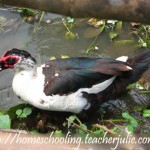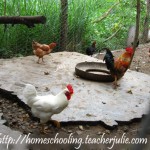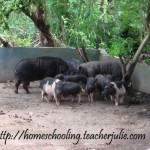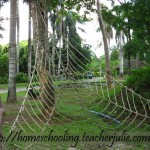January 14, 2011
Enrichment, Grade 4, Homeschoolers No More, The Son, Weekends
No Comments
My Boy Scout is going camping today. The scouts will have an over night camping. I’ve already prepped the things he will bring and hubby was shocked to see how much food I prepared: several brick boxes of milk, water bottles, bananas, a small loaf of bread, cookies, biscuits and even a can of pork and beans.
I also put several clothes to last him several days.
He is bringing a tent and a sleeping bag. His contribution to the group are several bags of charcoal for cooking.
I wanted to bring him to his pulmonologist first before the camping but we didn’t have time to visit the doctor. I hope he won’t have an asthma attack though he brought his inhaler with him, as he always does.
January 8, 2011
Grade 4, Homeschoolers No More, Philippines, Sibika/Makabayan, The Son
No Comments
Land Area: 14663.21 sq km
Population: 6,398,628 (2007) ika-lima sa pinakamaraming tao sa 17 na rehiyon sa Pilipinas
Mga Lalawigan:
- Bohol
- Cebu
- Negros Oriental
- Siquijor
Topograpiya: mabundok at maburol ngunit may bahaging lambak at kapatagan. Napaliligiran ng tubig-dagat.
Klima: May ulan kapag mga buwan ng tag-ulan. May ilang lugar na hindi malinaw ang panahon ng tag-ulan ngunit maiksi ang tag-init. May mga bahaging pantay ang distribusyon ng ulan sa buong taon.
Mga Produkto:
- Mga pananim: mais, palay, gulay, niyog at asukal
- Produktong galing sa pangingisda at pag-aalaga ng hayop
- Yamang-kabundukan: ginto, pilak, karbon, tanso, at batong lupa na ginagawang semento, limestone at uling.
Mga Mamamayan:
- Bohol – Boholan; Bol – anon
- Cebu – Cebuano
- Negros Oriental – Negrense
November 20, 2010
Enrichment, Filipino, From the Teacher, Grade 4, Homeschoolers No More, The Son
No Comments
August marks “Buwan ng Wika” in honor of the late President Manuel L. Quezon. Different celebrations in different schools were done to commemorate this day where the Filipino language is the main focus of the month.
School children play different native games, wear traditional Filipino clothes and eat native food and delicacies.
For the intermediate level where the children are now enrolled, they had a poem recitation contest among grades 4 – 5 children. There were 8 contestants (from 8 classes, 4 classes for each grade level) and my son was one of those who competed. They recited “Tayo na sa Bukid”
I missed his performance during the competition because he said it’s ok for me not to watch but I later found out that it was ok. Sigh.
Anyway, the good news was that he won! He bested seven other contestants.

Here he was reciting the poem during the culminating activity in front of the whole school assembly.
October 26, 2010
Artistic Expressions, Enrichment, Homeschoolers No More, Images, The Son
2 Comments
This is Mr. Potato Head made from modeling clay of different colors.
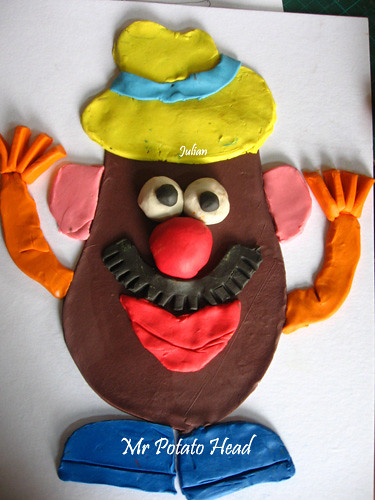
How to do the modeling clay project:
- Draw the figure you want to make using the modeling clay. Pattern the size of the drawing to the board where you will put the modeling clay character.
- Use rolling pin to flatten the modeling clay. In our case, we used a discarded cling wrap carton roll as rolling pin.
- Use other materials to shape the body parts like a plastic knife for a more precise cutting of the modeling clay.
- Make the parts of the (cartoon) character you want to make.
- Put the parts together.
Don’t forget to take step-by-step photos of your art project to document your progress 🙂
September 27, 2010
From the Teacher, Grade 4, Homeschoolers No More, Mathematics, Reviewers
No Comments
Greatest Common factor or GCF is the largest whole number that divides evenly into each of the numbers.
FACTORS are the numbers that you multiply to get another number. [ 3 X 5 = 15 where the factors are 3 and 5]
To get the greatest common factor, one can use two methods:
- First is to list all the factors of the given numbers. The list the common factors or the same factors for these given numbers. When this has been done, choose the biggest number among the common factors.
ex: 30 = 1, 2, 3, 5, 6, 10, 15, 30
20 = 1, 2, 4, 5, 10, 20
The common factors for 30 and 20 are 1,2, 5 and 10 therefore the greatest common factor is 10.
- Another method for finding the greatest common factor is listing down the prime factors. After listing the prime factors, multiply these prime factors.
PRIME FACTORS are numbers that can only be multiplied by 1 and itself [ex: 2,3,5,7,11…]
The prime factors for 30 are 5 x 3 x 2
The prime factors for 20 are 5 x 2 x 2
The prime factorization of 30 and 20 have one 5 and one 2 in common. Multiply these common prime factors and you get the greatest common factor.
5 x 2 = 10
August 30, 2010
Enrichment, Filipino, From the Teacher, Grade 2 Lessons, Homeschoolers No More, Philippines, Reviewers, Younger Daughter
No Comments
Isulat ang PN kung pangungusap o PR kung parirala:
- Nais kong mamasyal sa tabing-ilog.
- Regalo ng aking Ina
- Napakagandang bulaklak
- Tulungan nating alagaan
complete reviewer to be updated soon…



